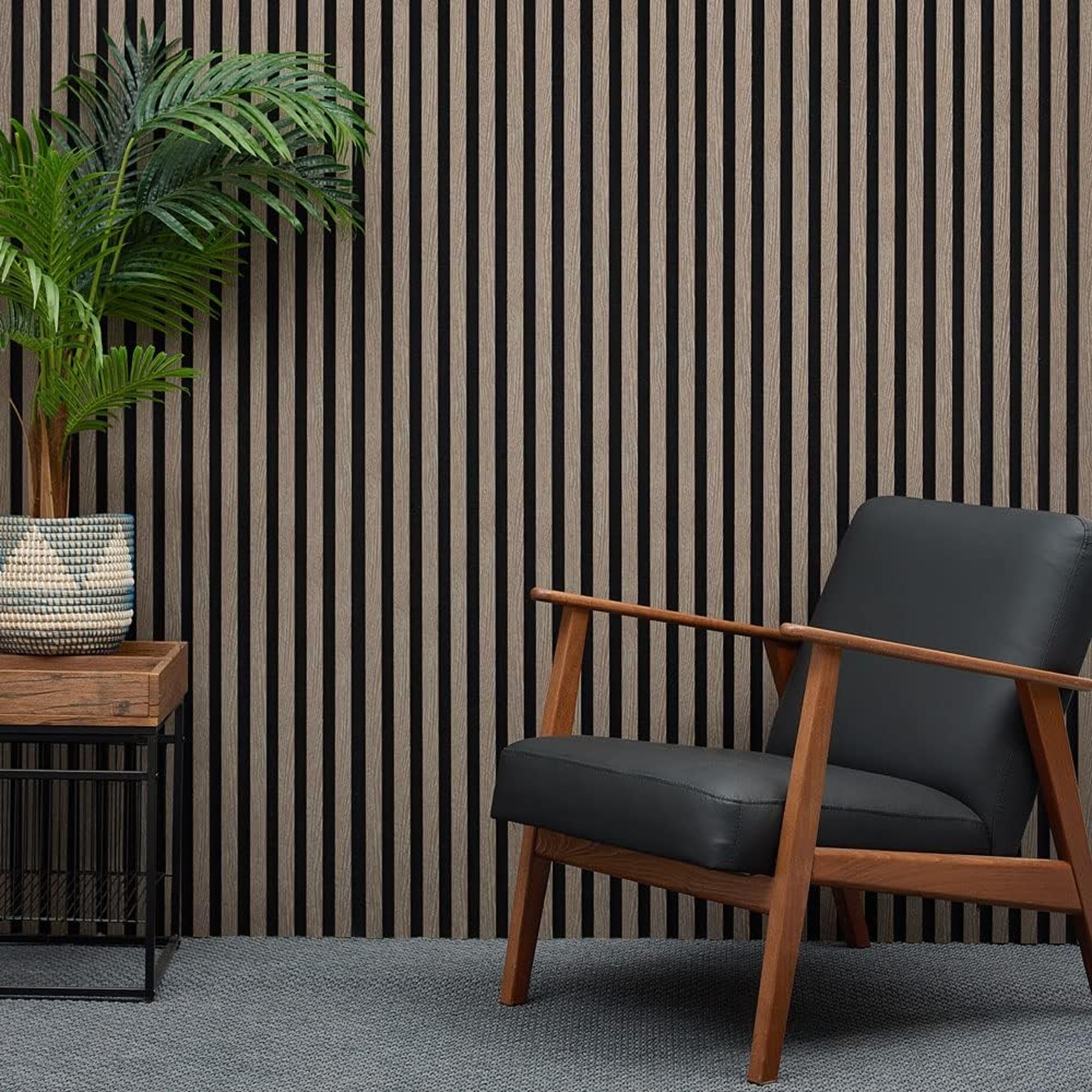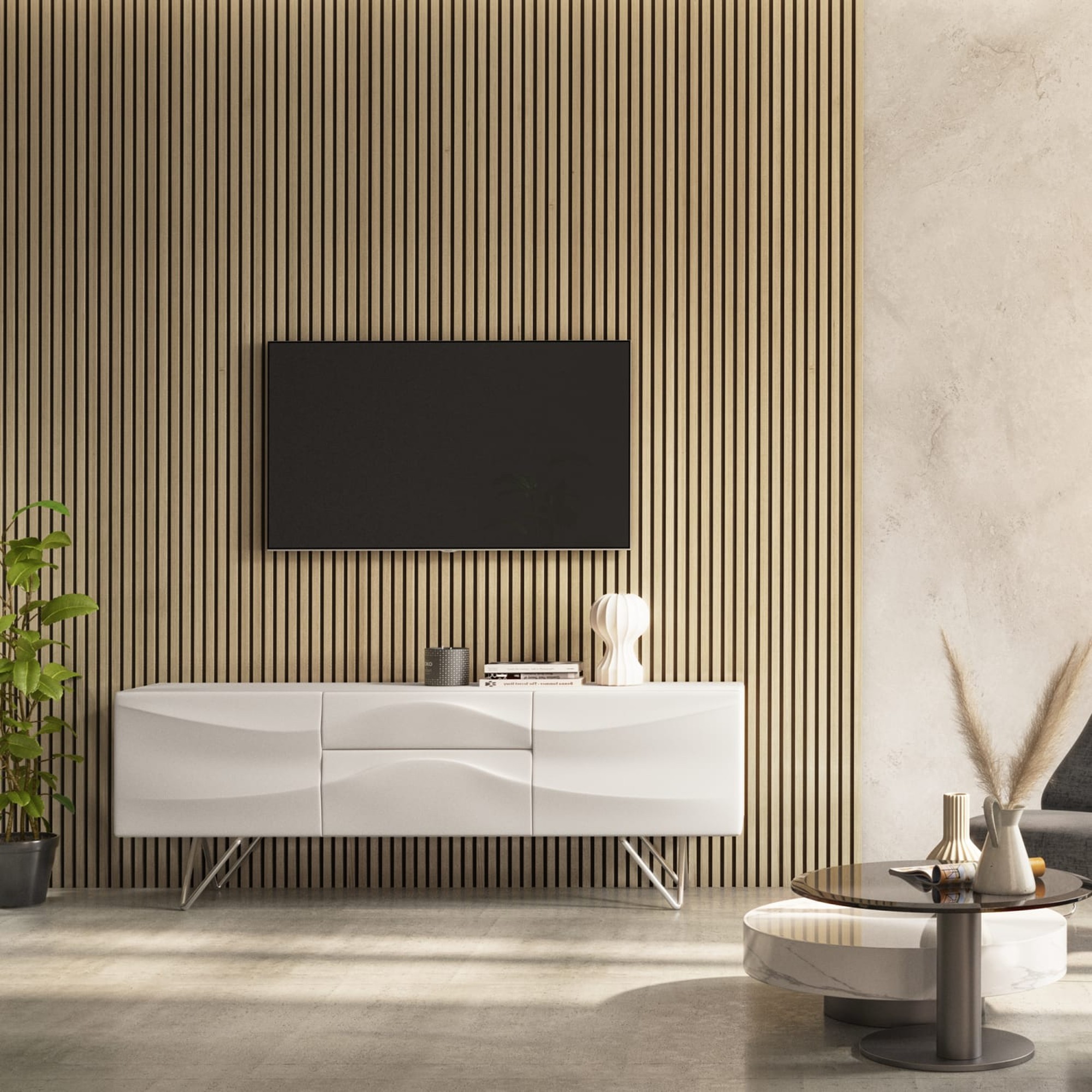Stair panelling ideas – 12 ways to step up your staircase decorating game
Top tips to instantly elevate the look of your staircase with a single feature
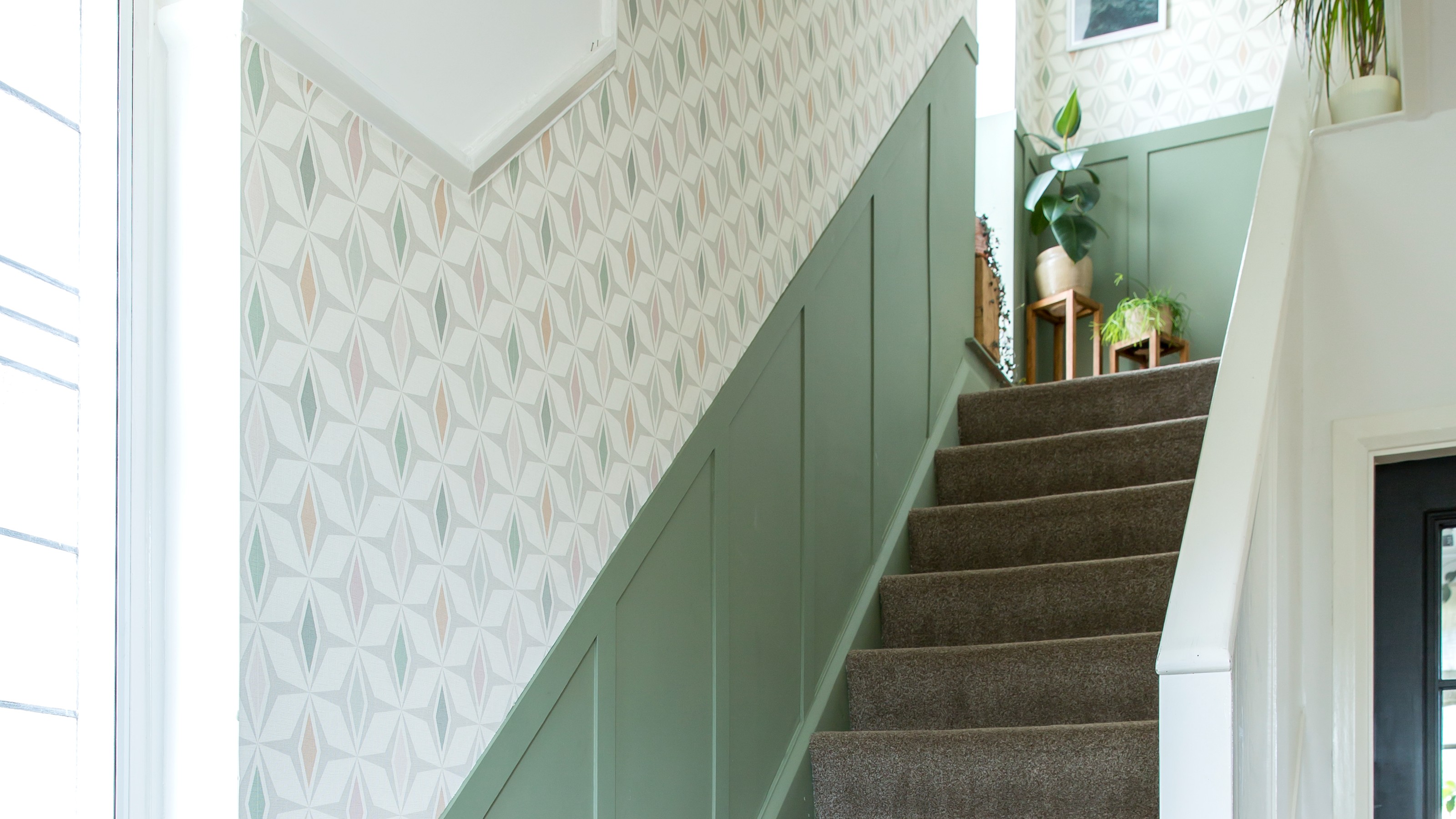
- 1. Keep with tradition with wainscoting
- 2. Opt for super slim slatted panelling
- 3. Mix old and new
- 4. Go for a modern style
- 5. Play with different designs
- 6. Frame your staircase
- 7. Experiment with colour
- 8. Be a traditionalist
- 9. Create a handy understairs nook
- 10. Choose half-height panelling
- 11. Combine different textures
- 12. Paint panelling in contrasting colours
- FAQs

Sara Hesikova
Much like any other small and awkwardly or unevenly shaped space, the staircase can be a difficult area to decorate and make it stand out for most. Similarly to the hallway, the staircase is therefore often a forgotten and underutilised area that’s seen merely as a transitional space between one room and another. But this space can be easily elevated with the help of stylish stair panelling ideas.
This staircase idea seems simple enough, yet this single feature makes a world of difference. Wall panelling ideas bring both texture and depth, as well as an appearance of intention and consideration to any space, stairways included.
Stair panelling ideas
But if you’re not sure what style of stair panelling to go for - whether that’s modern vertical slats or a more traditional Jacobean design - then you will surely find some guidance in our stair panelling ideas round-up.
1. Keep with tradition with wainscoting
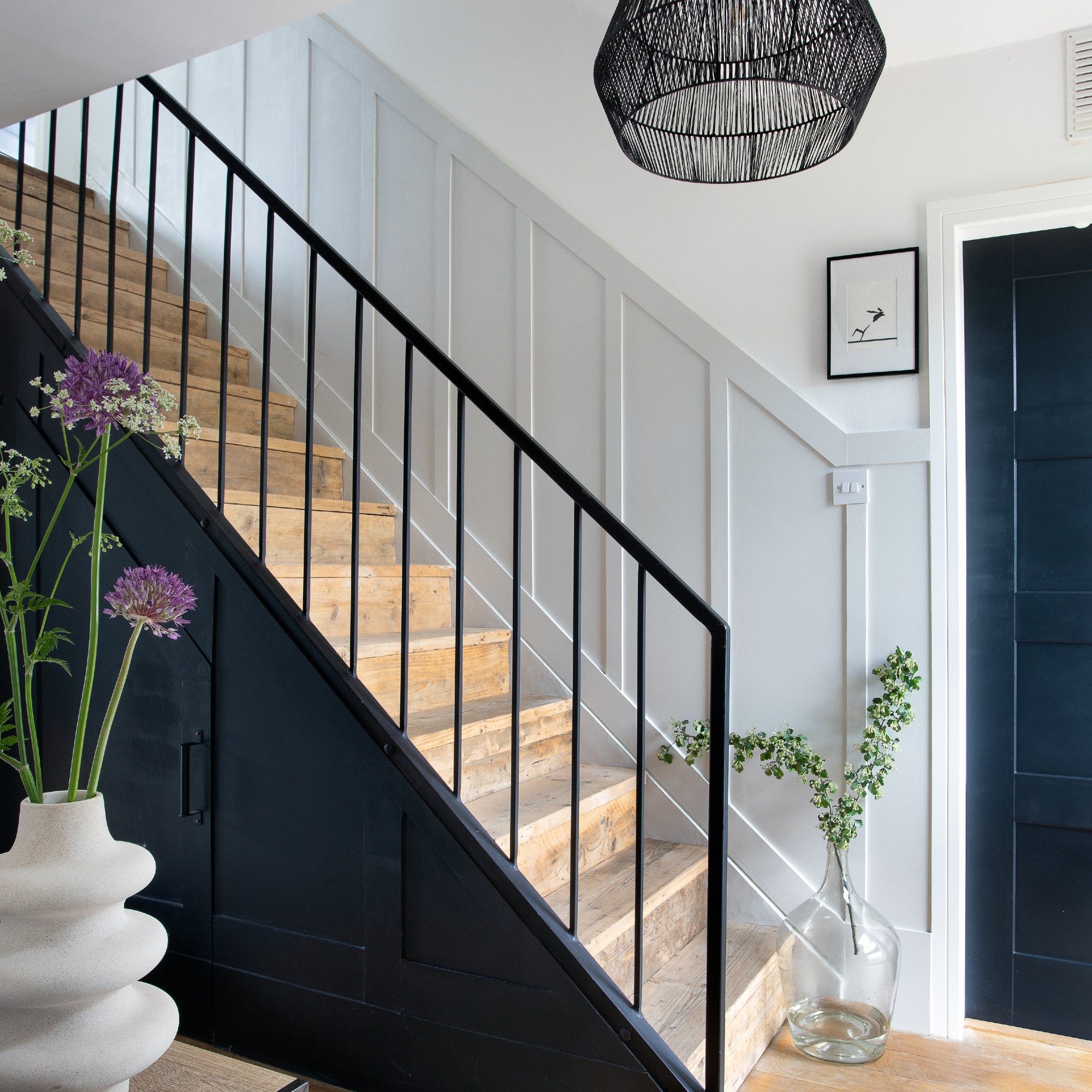
Classics are classic for a reason – they’re timeless and they work. And that’s exactly the case with the classic wainscoting panels which will bring a sophisticated touch to your staircase and make it look expensive.
‘Wainscoting is a classic choice for staircase walls as it offers a subtle and timeless look that can be customised to suit your interior scheme,’ says Olivia Crosher, interior designer for Naturewall. ‘This style panelling is paintable, which means you can go as bold or neutral as you wish, with the option to switch up the colour to create an impactful transformation without having to replace the panelling.’
2. Opt for super slim slatted panelling
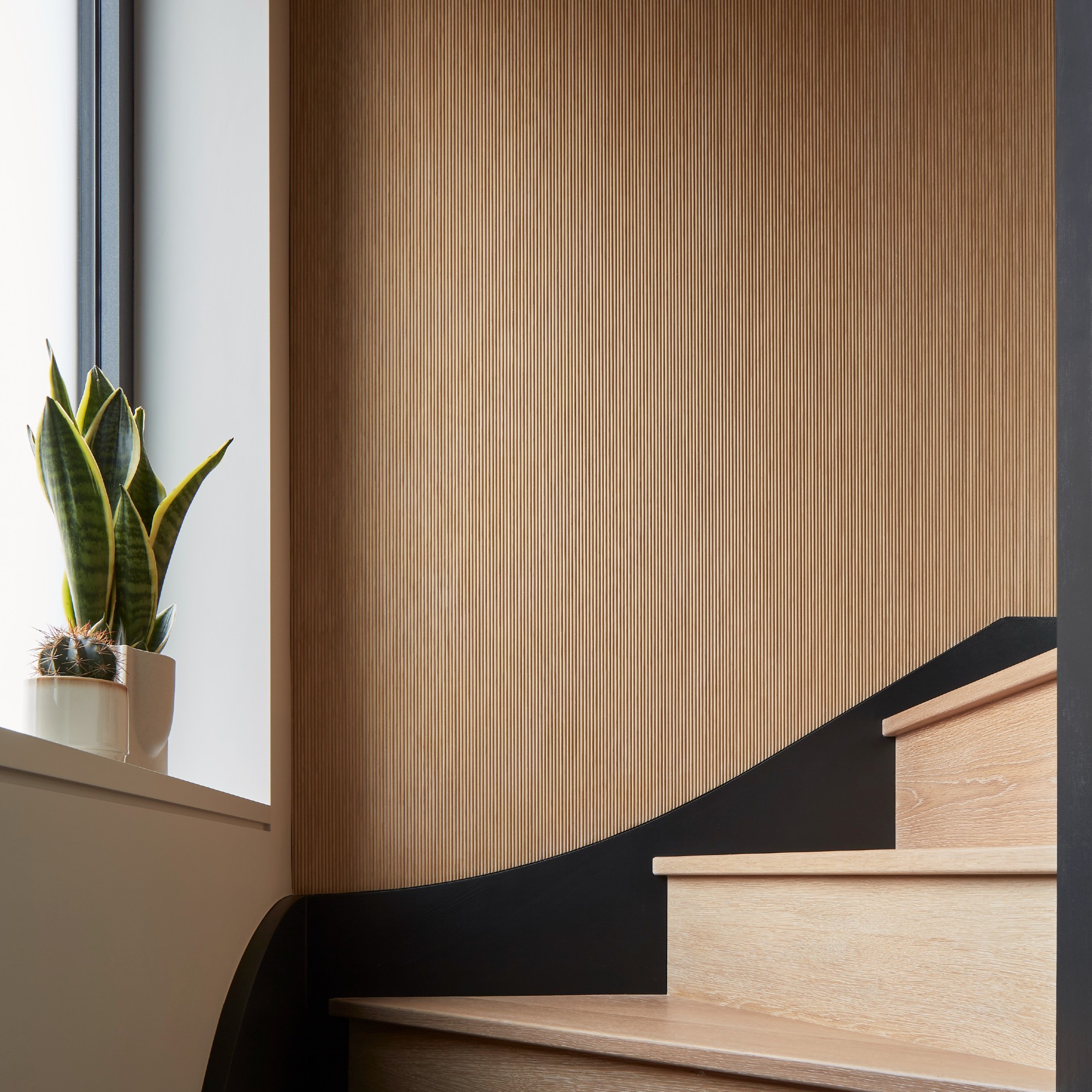
On the other hand, if you want to go in the exact opposite direction and create a more contemporary look, the perfect stairway wall idea for that is going for super slim vertical slats.
‘Opt for panelling which offers sleek and clean lines, in order to create a modern and streamlined appearance,’ says Bethany Kendrick, product category manager at Havwoods. ‘Vertical panelling is always a great choice as the vertical lines help to make a staircase feel more spacious.’
Get the Ideal Home Newsletter
Sign up to our newsletter for style and decor inspiration, house makeovers, project advice and more.
Olivia at Naturewall adds, ‘If you want a more contemporary look, opt for half-height wood slatted panelling. The vertical lines add interest and depth, creating a statement piece. This will bring a modern feel to your staircase by introducing clean, simple lines.’
3. Mix old and new
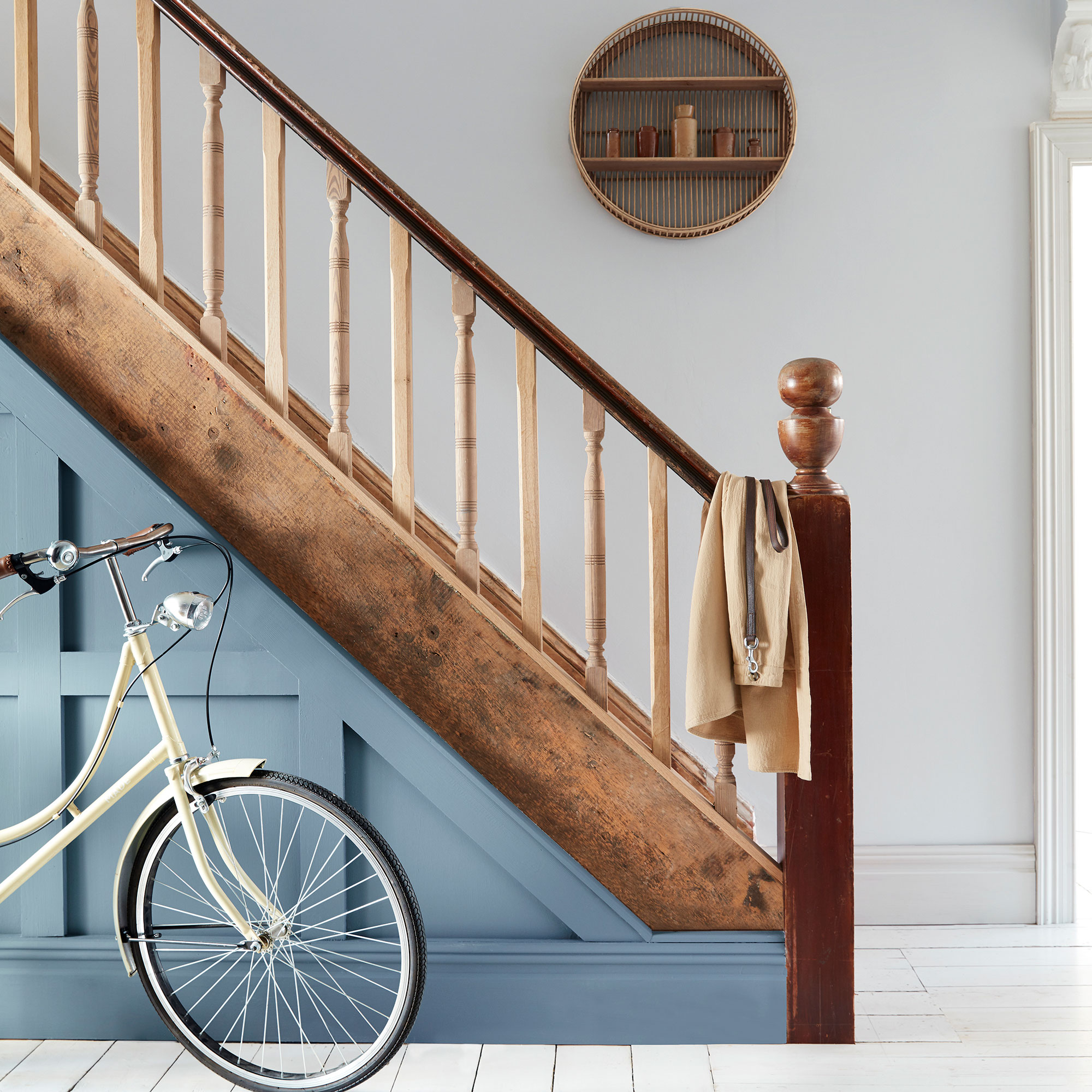
Highlight the features of a beautiful staircase by leaving the banisters in a natural wood finish, but add panelling under the stairs and paint it in an inky colour to show off its features. The panelling will act as a frame, drawing your eye to the staircase itself, and is a great stair decorating idea for any style of home.
4. Go for a modern style
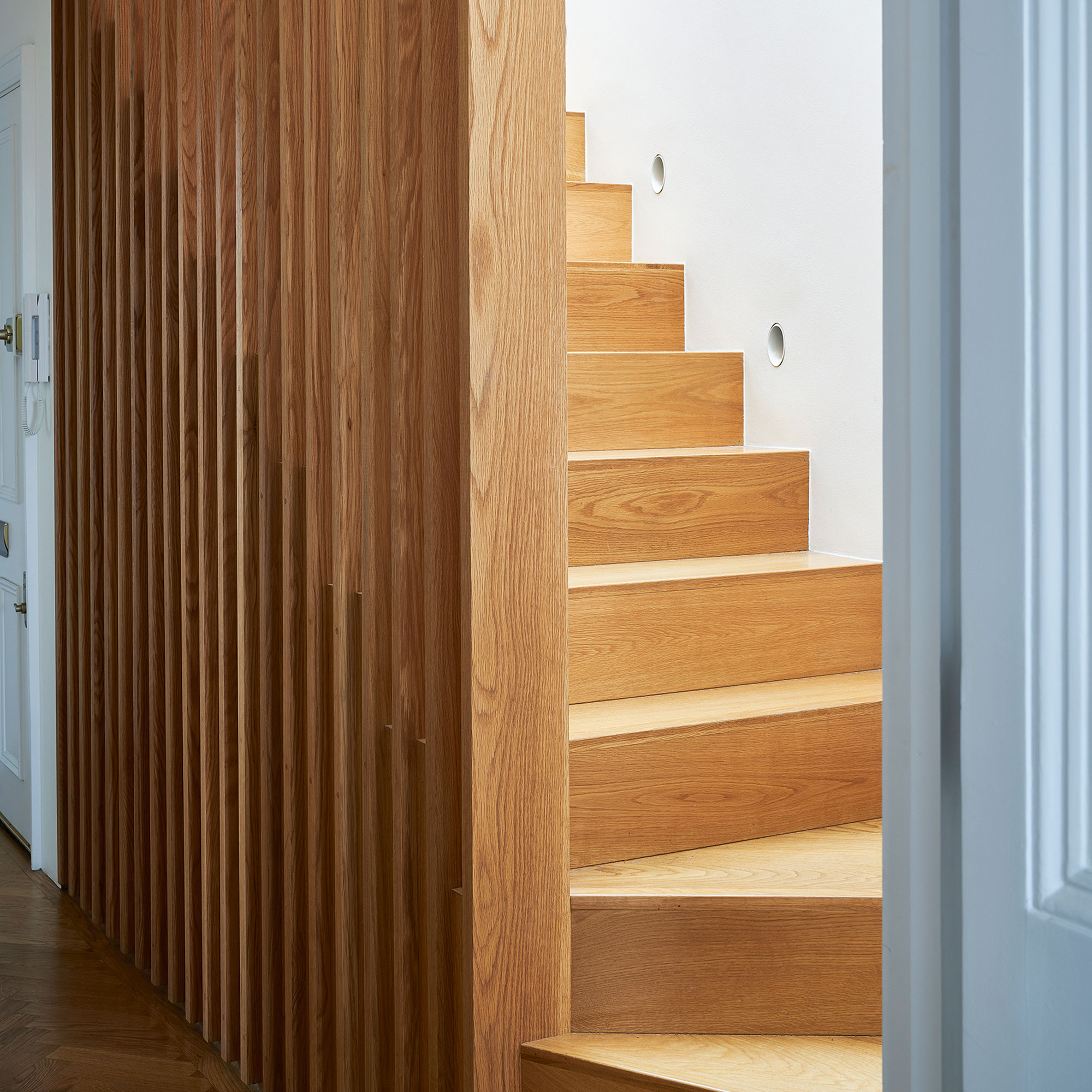
Wall panelling doesn't have to be traditional in style, there are plenty of ways to give it a modern twist like here. Using vertical panels gives this staircase a modern look, while leaving the natural grain of the wood exposed warms up a neutral scheme. Leaving small gaps between each panel will allow light to shine through, highlighting the architectural features.
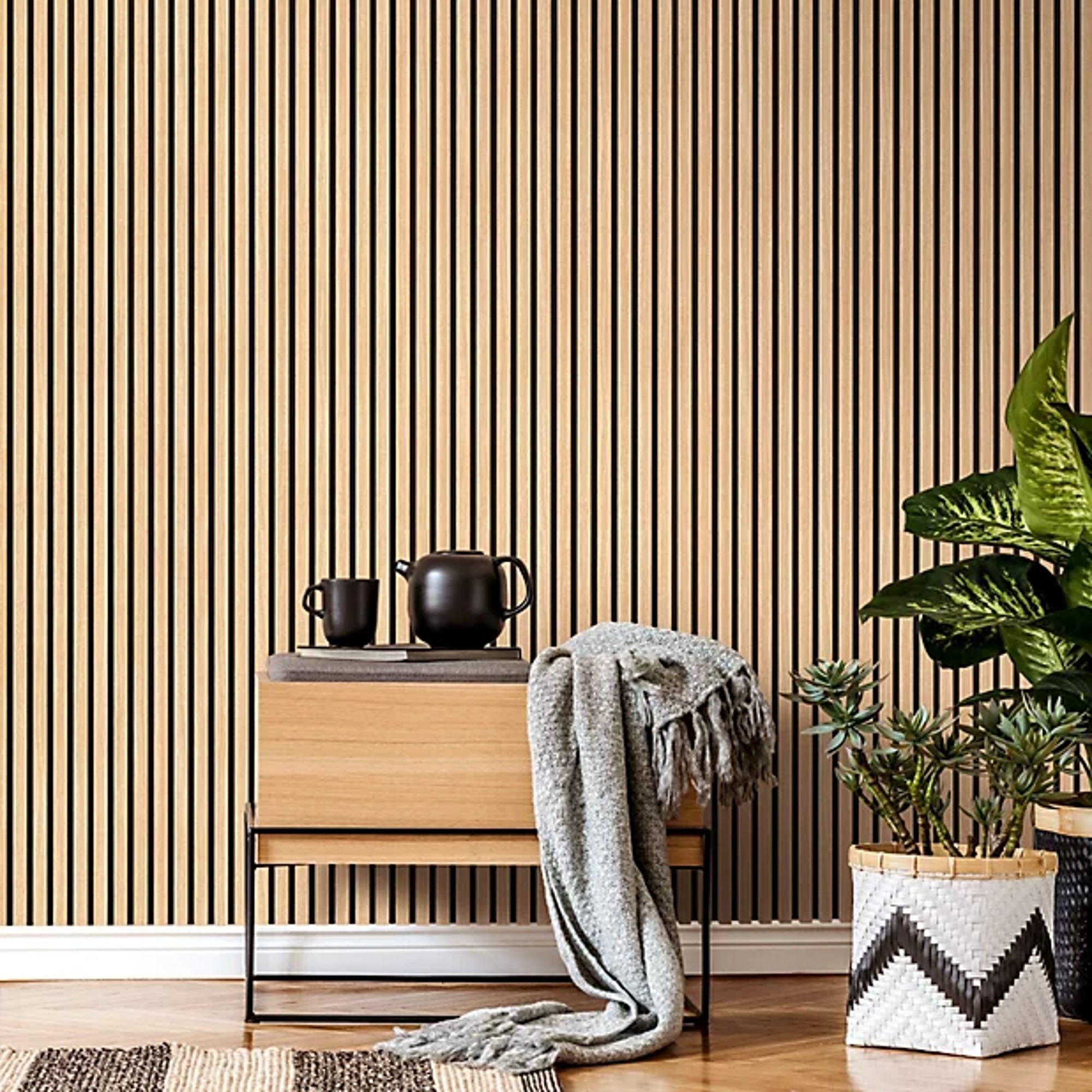
Made with wood veneer finish, this slatted panel is sophisticated and noise cancelling.
5. Play with different designs
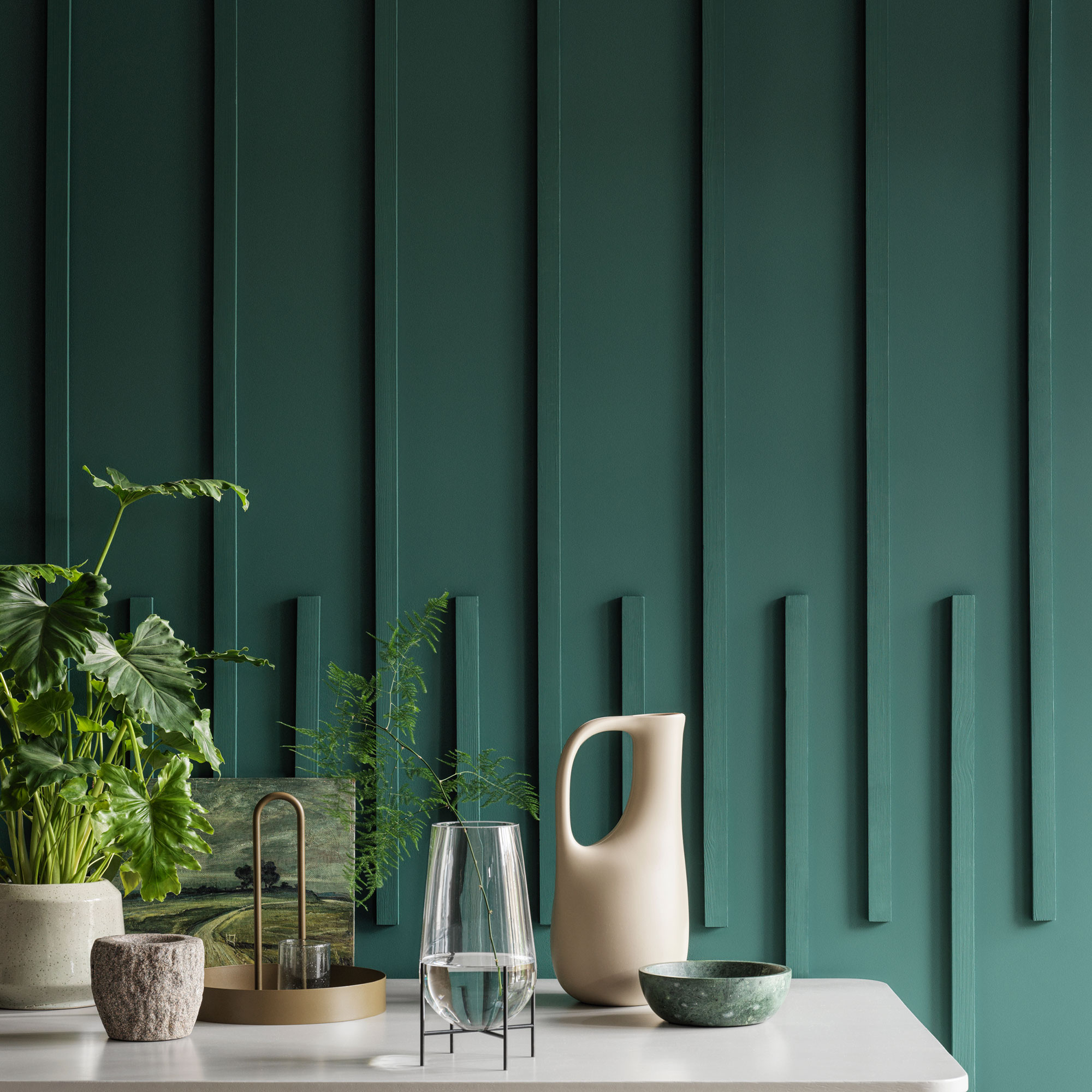
On a plain wall, it's easy to create your own panelling, simply use wooden battens secured to the wall to create a simple but effective design. Take time to mark out your design in pencil or chalk before securing the batten in place, so you can check the spacing is consistent. 'If your room lacks any architectural wall features, you can add simple wall panelling for a high impact feature wall,' explains Justyna Korczynska, senior designer at Crown Paints. 'The highlights and shadows created by the panelling will add another level to your feature colour creating a very bold statement wall.'
6. Frame your staircase
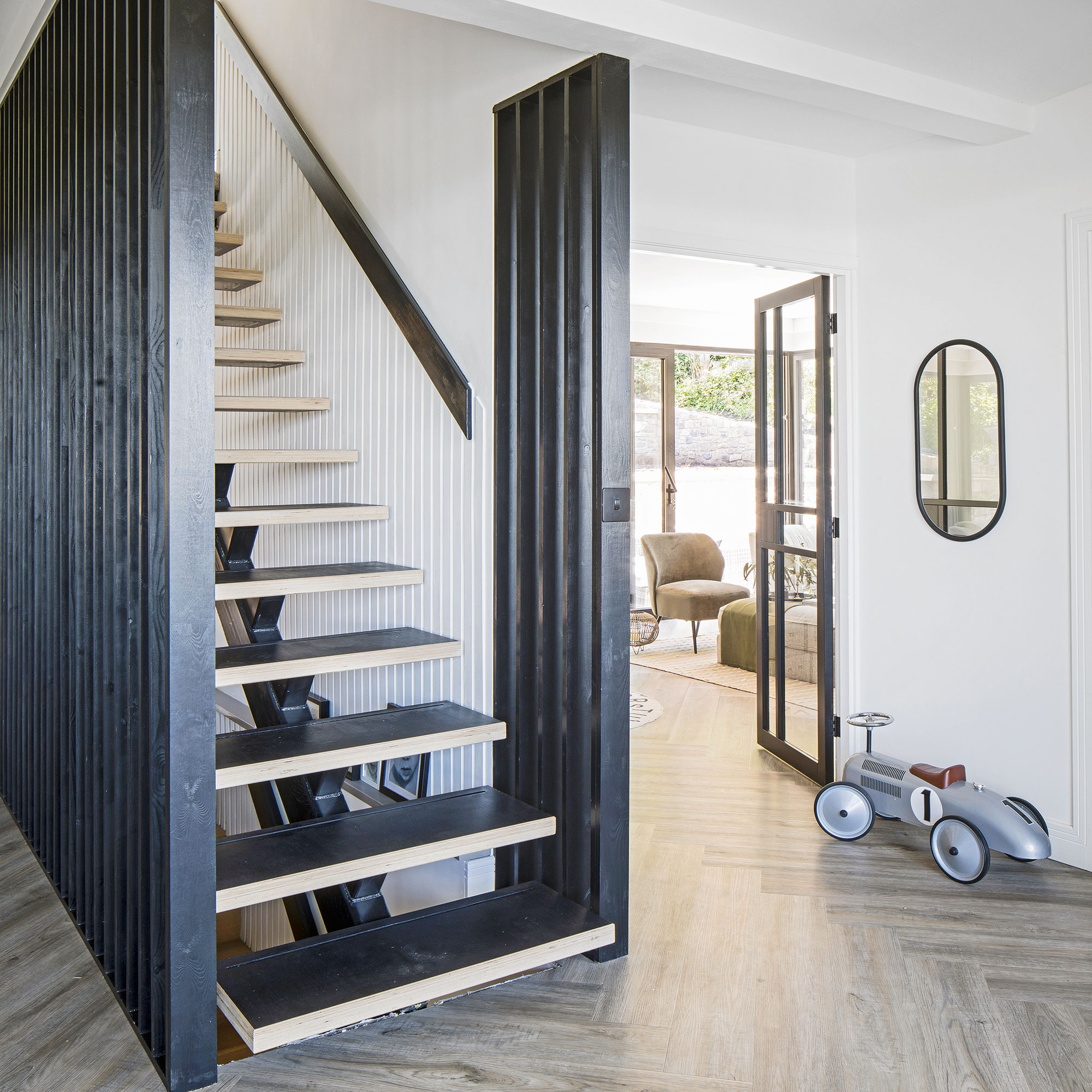
Panelling is a great way to frame a staircase. Vertical slats with gaps in between allow light to filter through to the staircase brightening up what can often be a dark area. By painting the panelling in an inky hue it turns the staircase into a feature drawing you into the space.
7. Experiment with colour
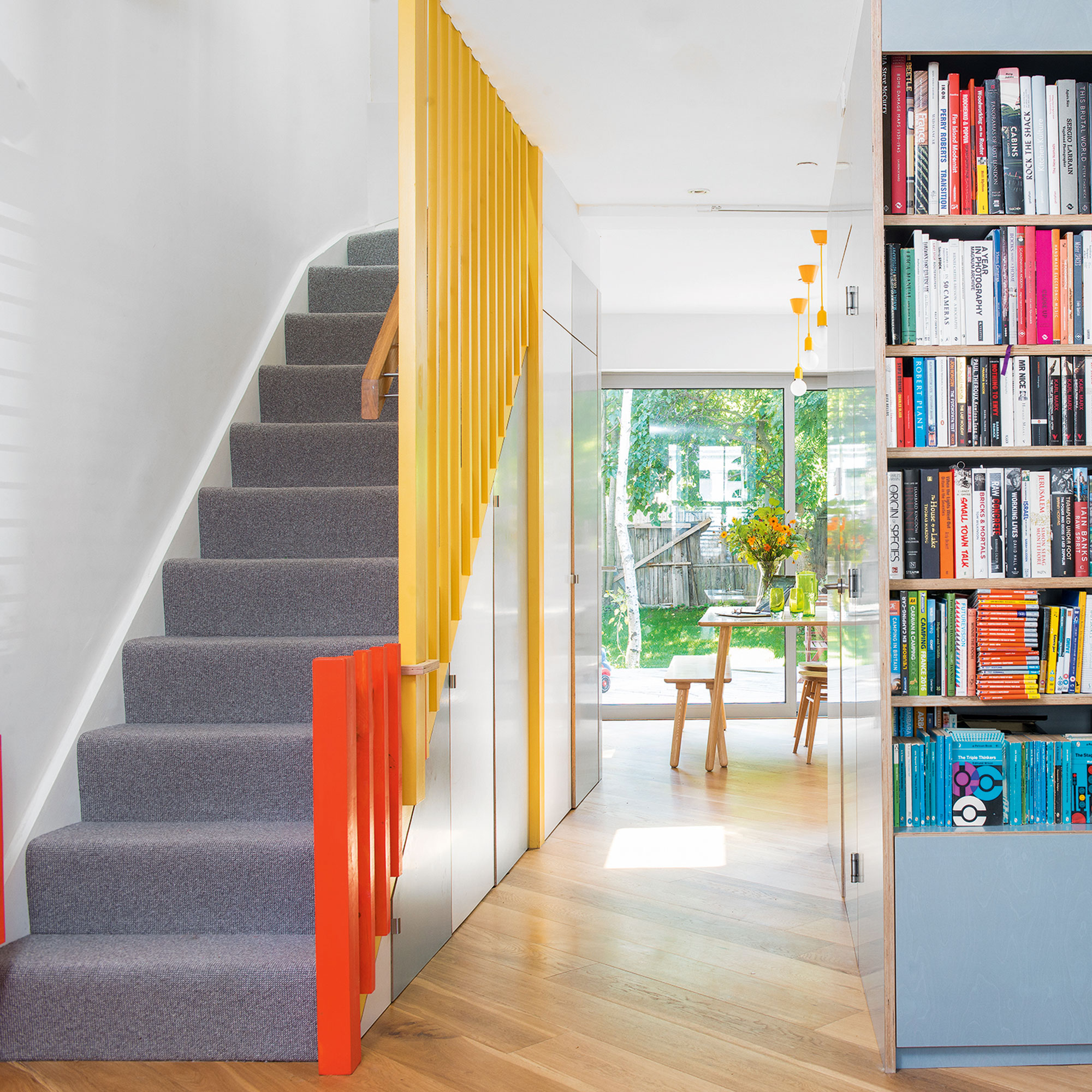
One way to make stair panelling stand out is by painting it in contrasting colours to other areas of your room. While the panelling design itself might be simple, punchy shades like the yellow and red below elevate it to a whole new level. It's a great way to make a feature of your banister idea.
8. Be a traditionalist
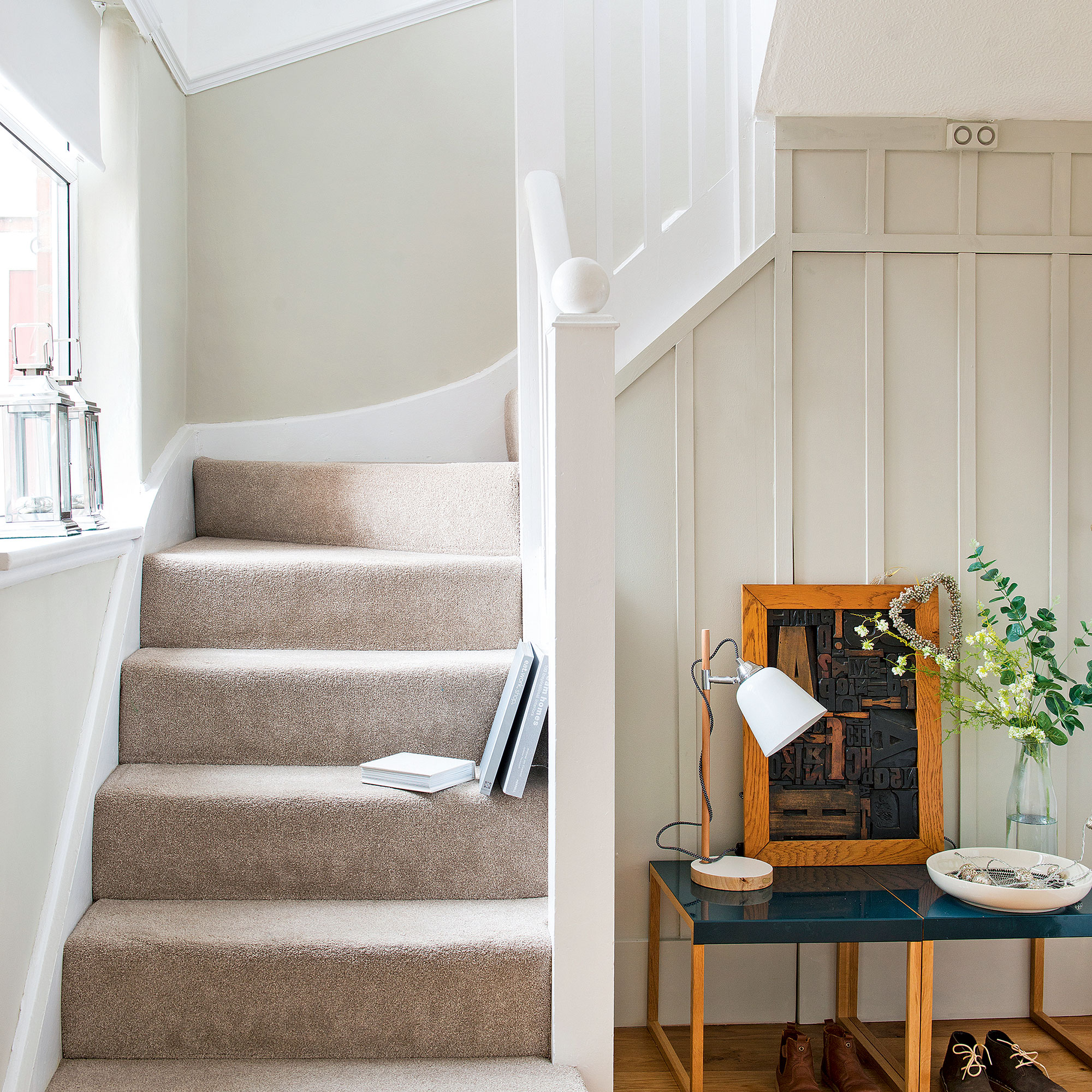
Sometimes the best approach to take for wall panelling is the traditional one. If you live in a period property, choosing a classic design like the one below will bring character to the space. Paint it in a natural colourway for a light and bright modern country vibe.
'Wall panelling can add a unique and striking look to any wall, but particularly those smaller, harder to decorate areas such as along your staircase. And the great news is, creating a sophisticated statement wall that can be completely personalised to your style is easier than you might think,' says Homebase expert Chris O'Boyle, trading director, EDRM. 'If you sketch your design straight on to the wall, you can live with it for a few days to make sure the design fits with your style.'
9. Create a handy understairs nook
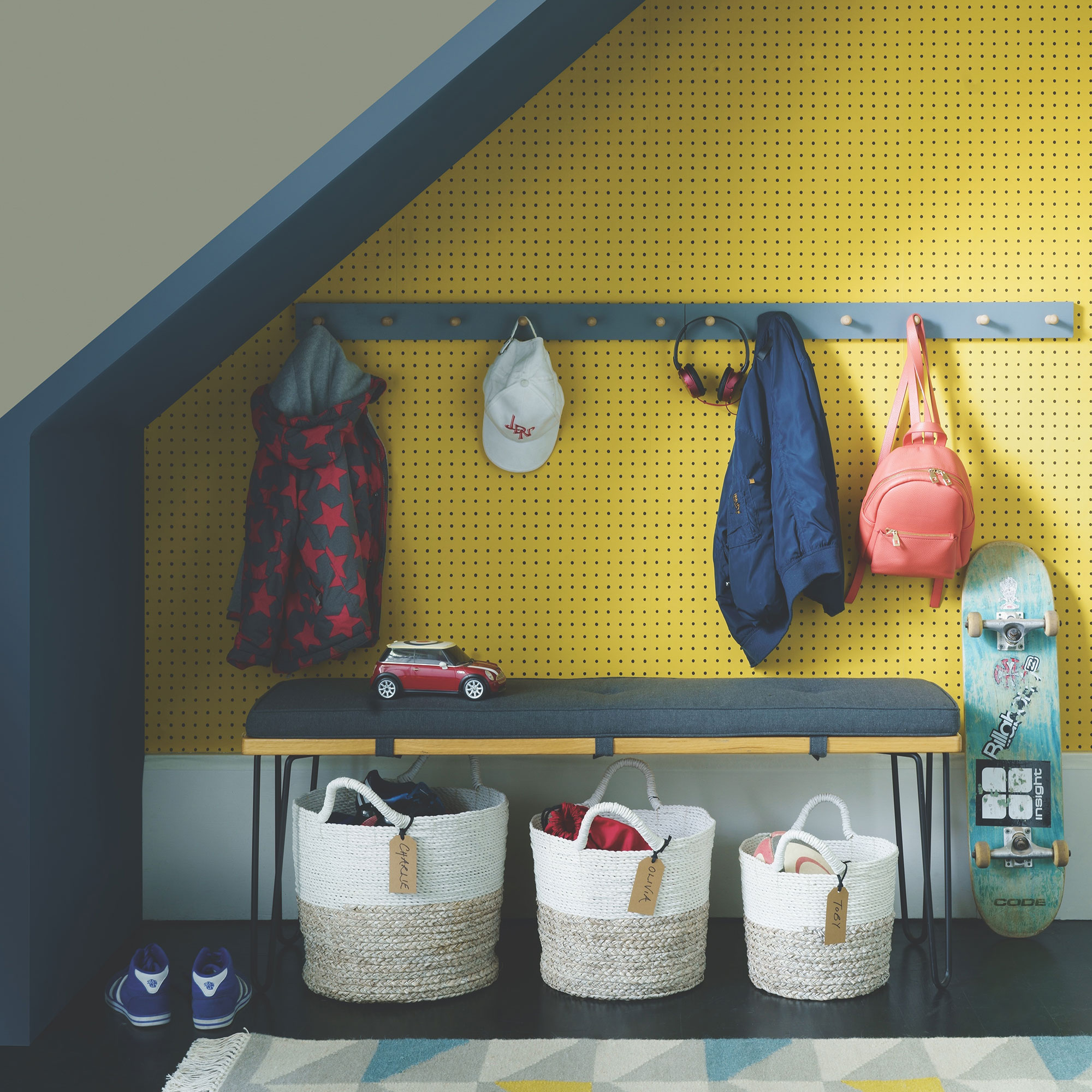
For a more playful take on stair panelling, try mounting pegboard to a wall in a bright colouway for a fun decorating idea. Add some hooks and a bench seat to your space under the stairs idea for a stylish area to get ready before venturing outdoors. The beauty of using pegboard is that you can easily add shelves or hooks utilising the space under the stairs for your needs.
'You don’t always have to panel directly up your staircase wall to create an eye-catching feature. If you have space under your stairs or on an adjacent wall, add slatted panelling to create a beautiful backdrop for a seating nook or storage solution. This will help to make the space feel more considered, whilst also zoning your interior,' Olivia at Naturewall says.
10. Choose half-height panelling
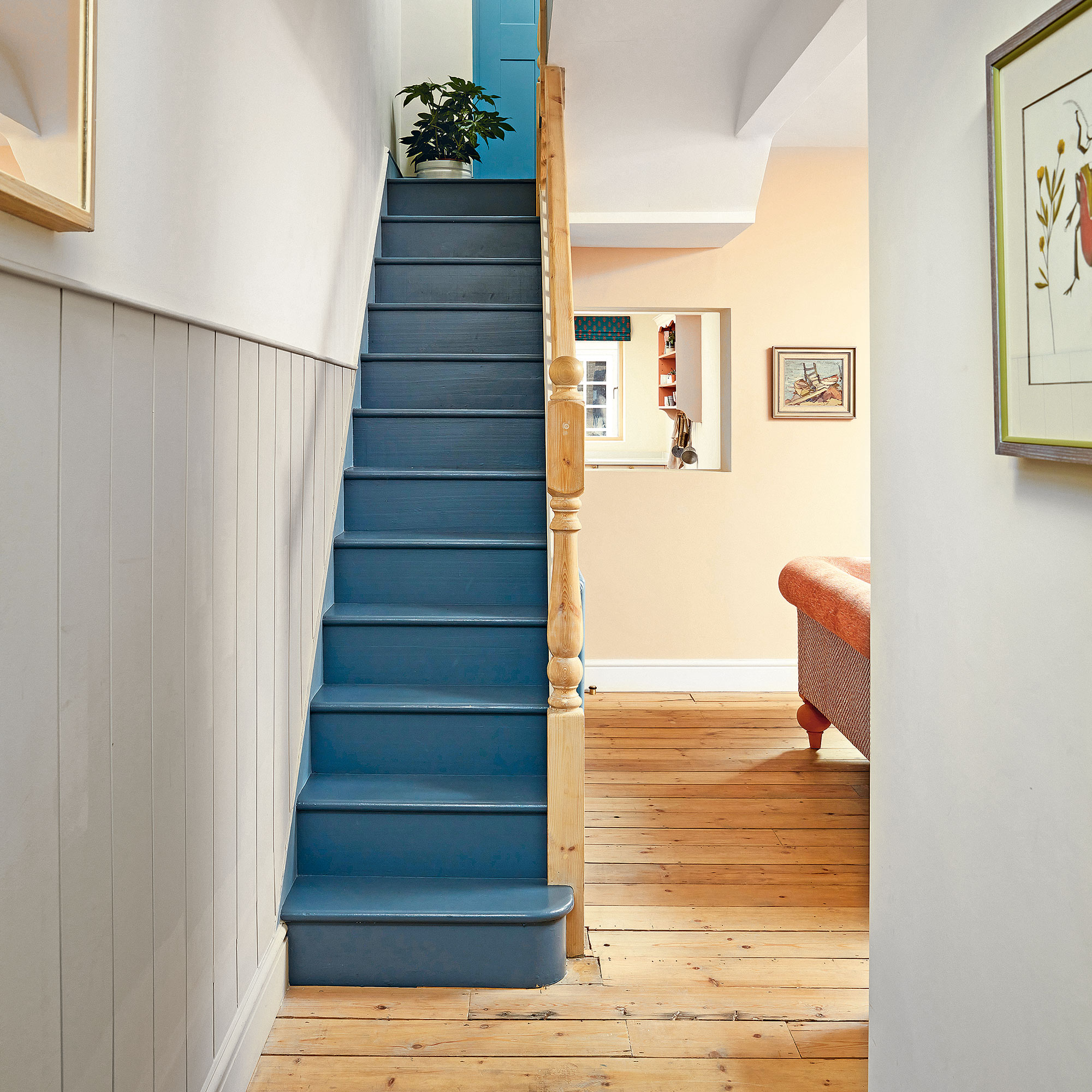
For a more traditional hallway set up, try a half height panelled wall. The panelling can be painted in a darker, tougher paint finish to help protect walls from scuffs and scrapes whereas the top half can be painted a lighter shade to brighten up the area. For a bolder approach, wallpaper above the panelling in a vibrant pattern or choose two strong contrasting paint shades for your panelling and the wall above – a great way to add character to a narrow hallway.
'Half-height panelling is the most popular choice for staircases as it offers both decorative and practical benefits, protecting the lower section of your wall from knocks, scuffs and scrapes. This allows you to get creative with paint colours and decorative accessories above the panelling, such as mirrors and framed photos or artwork,' Olivia at Naturewall says.
11. Combine different textures
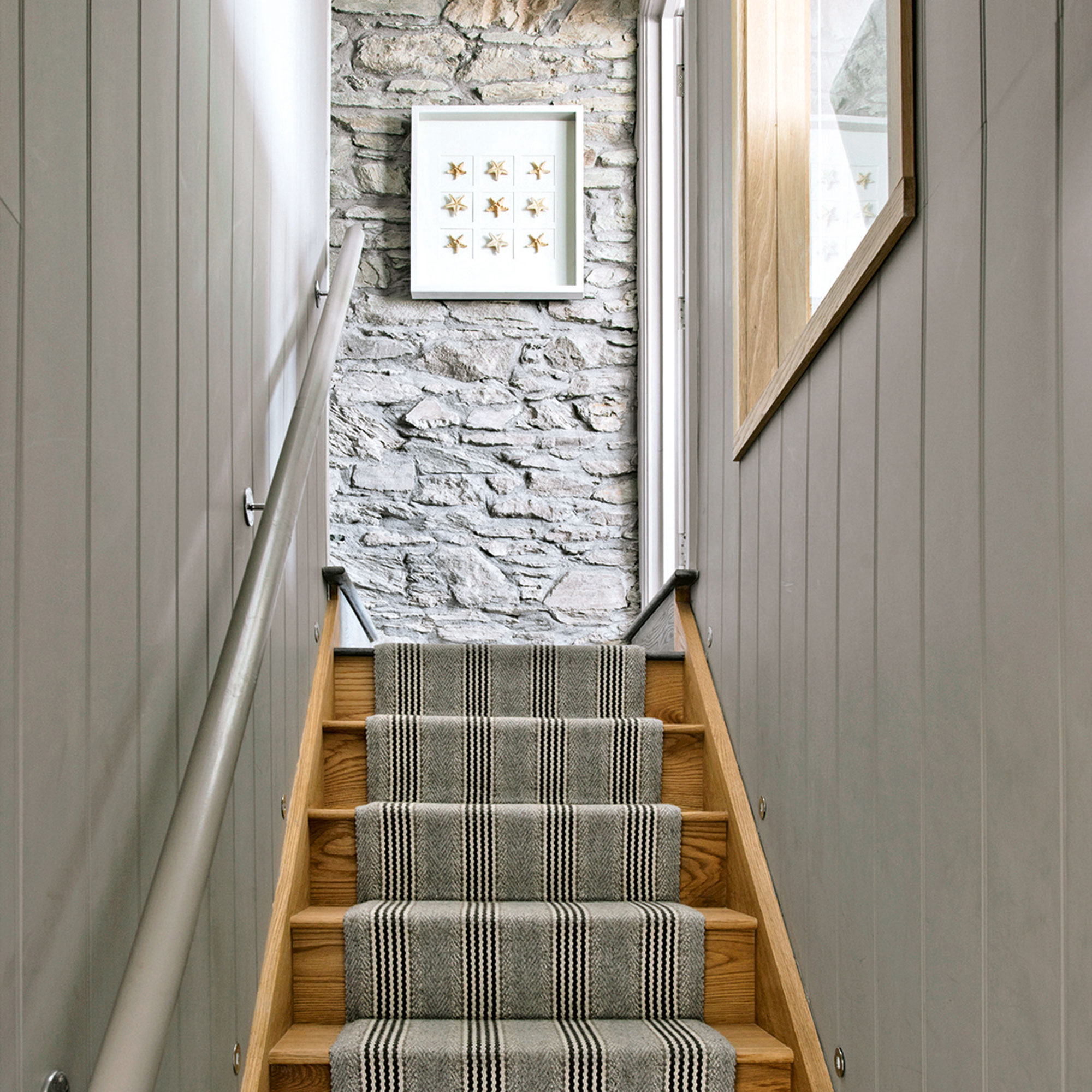
In a country home define different areas by using contrasting textures. Here the stone wall at the top of the stairs is framed by panelling running up the sides of the staircase. Keep to more neutral colourways complementing the colours of stone or brickwork for a cohesive feel, while leaving the stairs in a natural wood finish warms up the cool scheme. A coordinating stair runner idea is the perfect finishing touch.
12. Paint panelling in contrasting colours
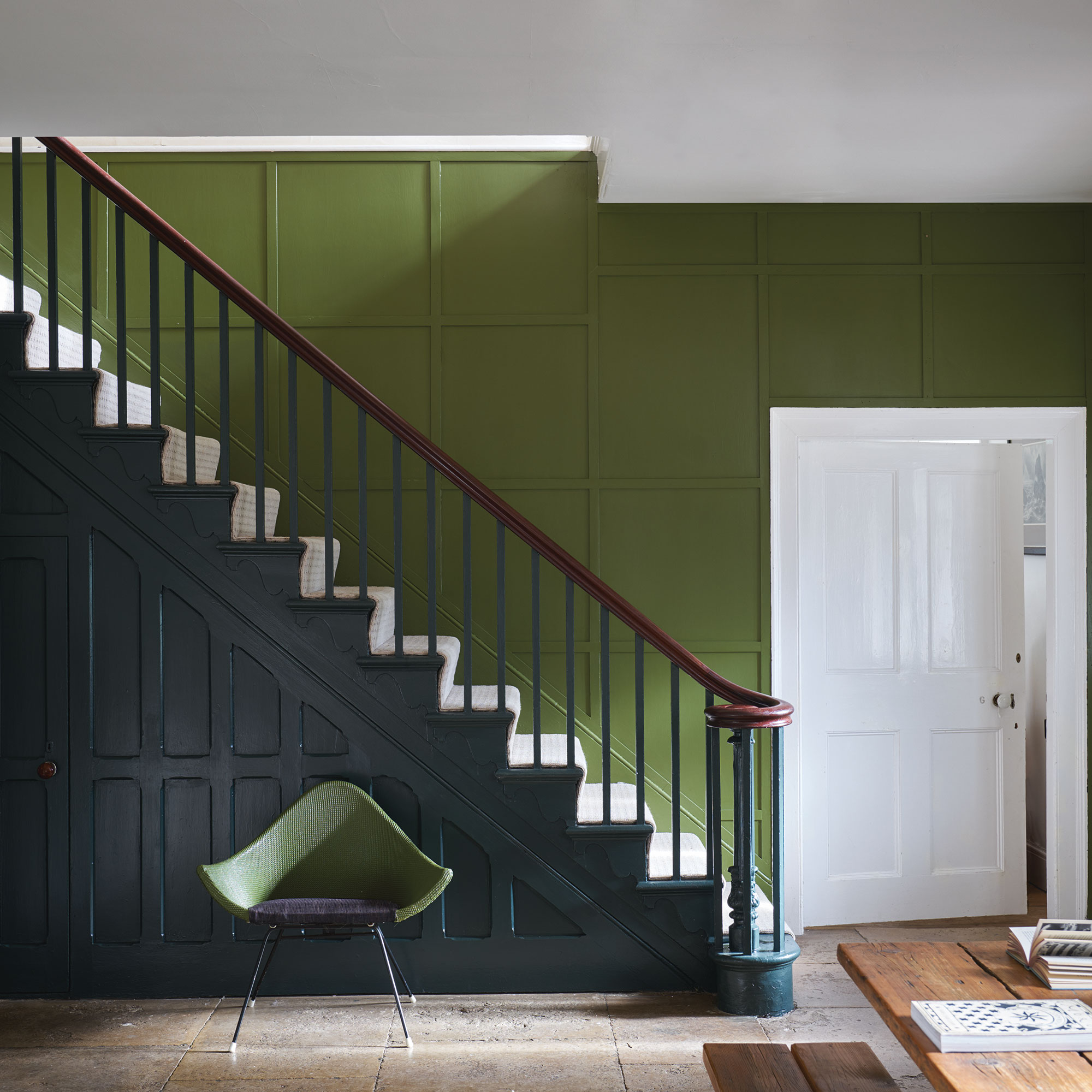
Don't be frightened of colour and try out different techniques to create a unique style. Here, the stairs and wall are both panelled but the different paint colours create a sophisticated feel, while the light carpet on the stairs creates a striking divide between the two spaces.
FAQs
What type of material should I use for stair panelling?
'Staircases tend to be a high-traffic area, especially in a family home,' explains Olivia Crosher, interior designer at Naturewall. 'Panels made from, or containing hardwoods such as oak, will be more durable and longer lasting than thinner materials like MDF. They will also add a three-dimensional texture to the space and be more resilient to the natural changes in temperature and moisture that happen in our homes throughout the year.'
There are also other options to make the area quieter. 'Staircases are usually a noisy area of the house, either with squeaky steps or hardwood steps that wake up the kids when you head upstairs in the evening,' explains Callum Freed, co-founder of The Wood Veneer Hub.
'Which is why we always recommend using acoustic panelling on staircases to absorb some of that excess sound.'
How do I choose a stair panelling design?
'Try to complement the shape of your staircase,' says Olivia. 'Horizontal style panelling can work very well on a curved staircase as it will visually open up the area and draw the eye around any bends. If you have a low ceiling, consider vertical panelling as this will create the illusion of an extended upward space. You don't have to cover the whole wall; another option is to follow the height lines of your banister or try a half height design.'
What's the best type of paint for panelling?
'Always make sure you prime and undercoat the panelling first, then add a couple of coats of wood/metal eggshell paint once it has dried,' says Victoria Yardley, founder of eco paint specialists, Victory Colours. 'This is a much tougher finish and is ideal for panelling.'
Now, you can get those stairs panelled in style!

Amy Hodge has been working on interiors magazines for over 11 years. She's a freelance writer and sub editor who has worked for some of the UK's leading interiors magazines including Ideal Home, Style at Home and Country Homes & Interiors. She started at Style at Home just after it launched as food editor and is now chief sub editor for Ideal Home, Style at Home and Country Homes & Interiors.
- Sara HesikovaContent Editor
-
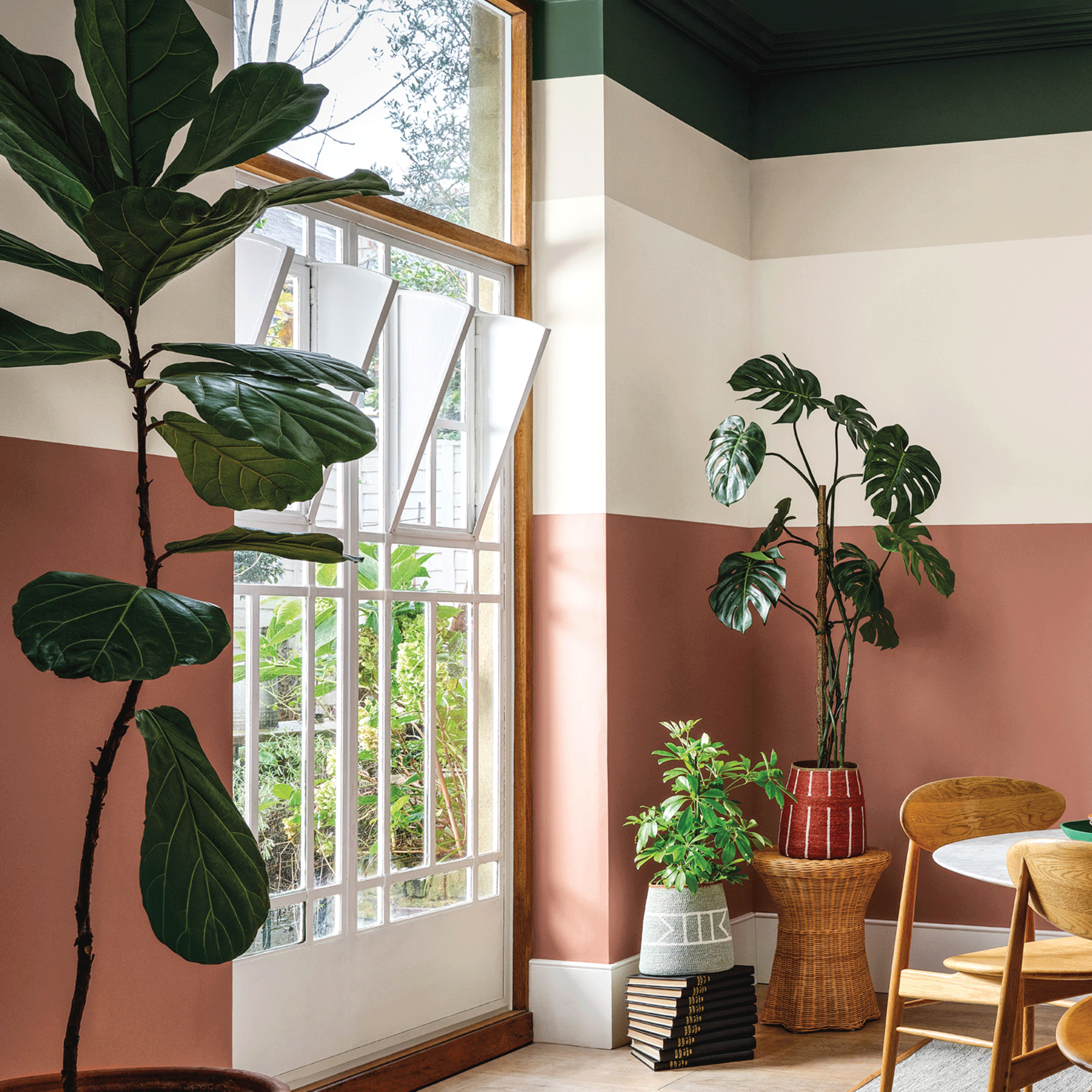 Crown Paint has launched new wall colours for the first time in three years, and changed how I think about neutral shades
Crown Paint has launched new wall colours for the first time in three years, and changed how I think about neutral shadesIs terracotta the ultimate neutral?
By Rebecca Knight
-
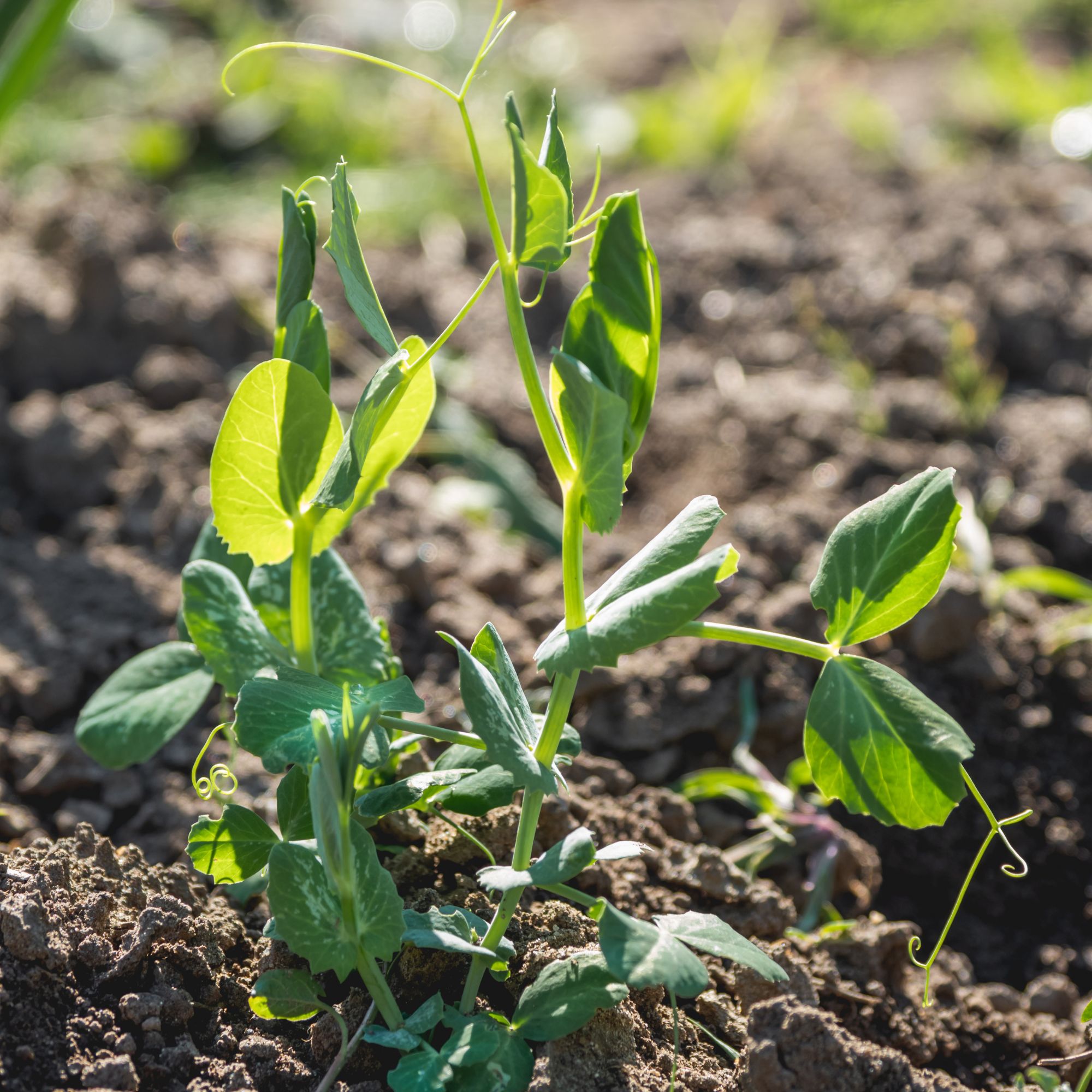 How to protect seedlings from birds – experts say there's a kind and clever way to stop them pecking
How to protect seedlings from birds – experts say there's a kind and clever way to stop them peckingYes, you can protect seedlings from birds without harming your feathered friends...
By Kayleigh Dray
-
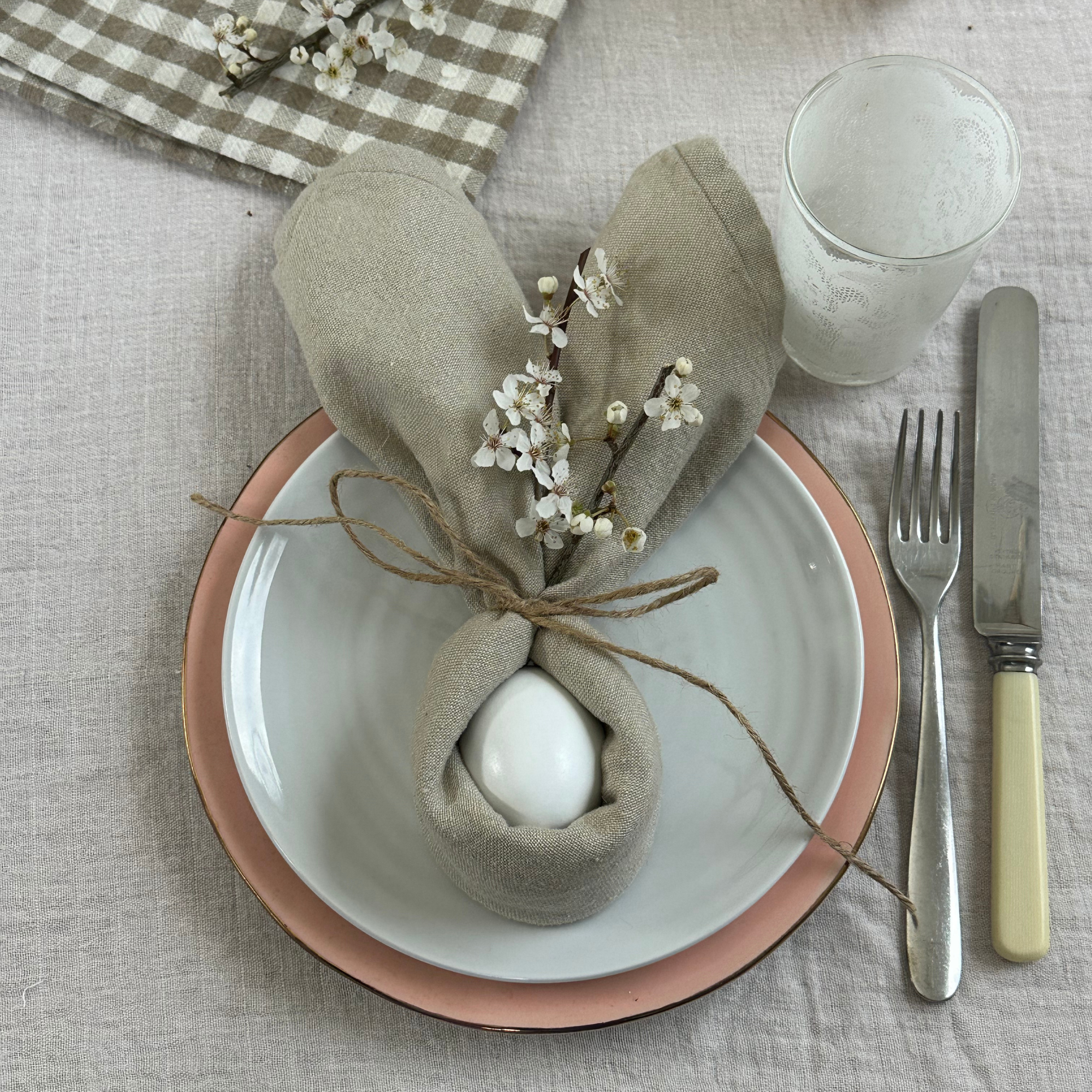 We tried the viral napkin bunny ears hack – it only takes five minutes and will take your Easter table to the next level
We tried the viral napkin bunny ears hack – it only takes five minutes and will take your Easter table to the next levelThis Easter craft is not only beautiful, but really easy to do
By Kezia Reynolds
